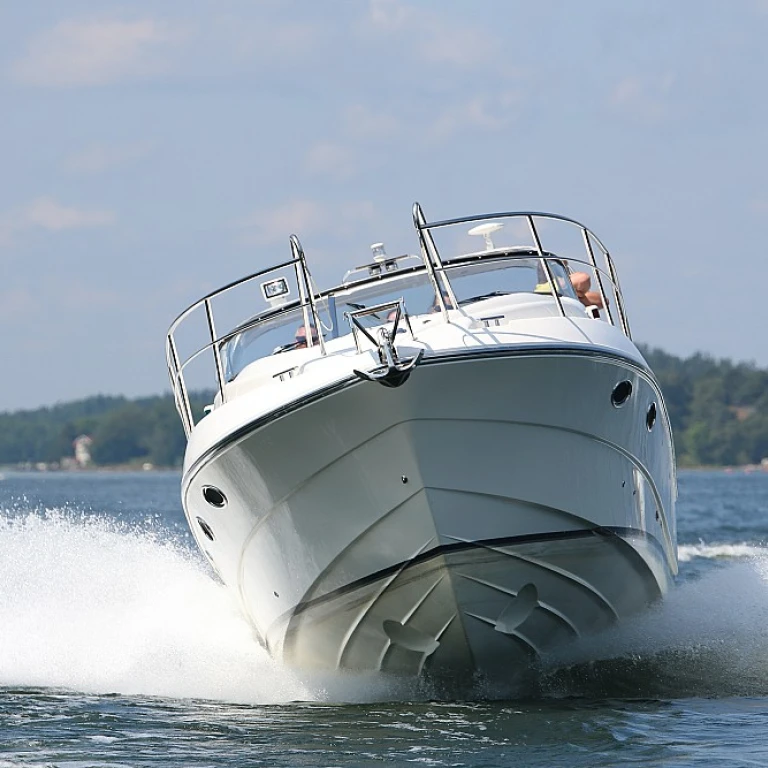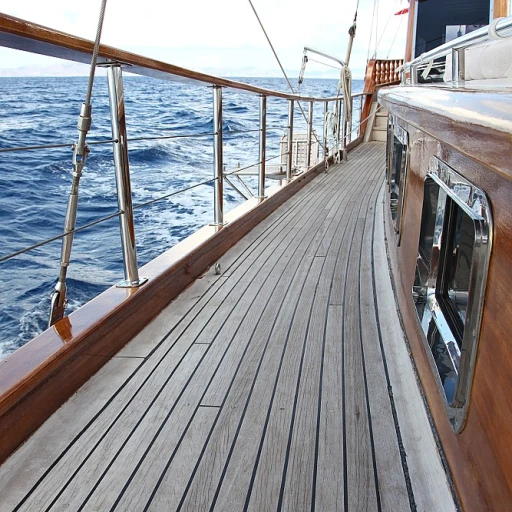
Understanding the Role of Tie Blocks in Yacht Rigging
Grasping the Essentials of Tie Blocks in Yacht Rigging
In the realm of yacht rigging, tie blocks play a pivotal role in ensuring the smooth and efficient operation of various onboard systems. These blocks, meticulously designed to handle both static loads and dynamic movements, are a cornerstone in managing the force distribution across the mast and boom. A fundamental understanding of how these elements function is essential for yacht enthusiasts aiming to optimize their sailing experience. Tie blocks come in a variety of configurations, such as single, double, and triple blocks, each suited to different applications on a yacht. For instance, a single block may be ideal for lighter loads, whereas a double or triple block could be better suited for handling the increased stresses associated with a boom preventer system or boom vang. Moreover, the integration of modern materials and technologies, such as ball bearing and cam cleat mechanisms, enhances their efficiency and longevity. When considering the layout of rigging systems, it’s important to examine how tie blocks interact with other components like the mast head or boom. A well-configured system will not only improve performance but also curb wear and tear, extending the lifespan of your equipment. Additionally, products from specialized manufacturers such as nodus factory often offer unique solutions that can be tailored to specific needs, combining cutting-edge designs with durable materials to withstand the harsh marine environment. It's also crucial to recognize the importance of a boom preventer or topping lift in mitigating unwanted movements during sailing. Using a suitable loop or block becket can facilitate smoother sail transitions and secure your rigging arrangement, enhancing overall safety and efficiency. As with any integral yacht component, understanding the "working load" and "breaking load" capacities of your tie blocks ensures that they are appropriately matched to the demands of your vessel. Knowing these specifications helps you avoid unnecessary strain that might lead to equipment failure. To delve deeper into the interconnectedness of yacht components, explore the significance of drain plugs in yachting, which provide crucial moisture control, further safeguarding the integrity of your yacht’s structure.Choosing the Right Tie Block for Your Yacht
Selecting the Ideal Tie Block for Seamless Sailing
When it comes to yacht rigging, choosing the right tie block for your vessel is crucial to ensure smooth sailing operations. The variety in block designs and functionalities calls for a well-informed decision to optimize your sailing experience. Firstly, distinguish between the types of blocks: single, double, and triple. Each type serves different functions depending on the load requirements and space constraints you have on board. For example, a triple block can handle heavier loads compared to its single or double counterparts, making it ideal for maneuvers requiring greater mechanical advantage. It's essential also to consider the material and construction of the block. Blocks with ball bearings reduce friction and facilitate easier movement, especially under high loads. If you're aligning the block with your boom vang or topping lift systems, opting for a bearing single or bearing triple block could enhance performance. Additionally, you'll want to assess your yacht's unique requirements. Consider the maximum working load and breaking load of the blocks you’re eyeing. For yachts that endure significant static loads, ensuring the block's integrity over time is fundamental. Don't overlook the input of the boom preventer system — selecting a boom preventer with a cheek block or a loop top will protect against accidental jibes. Products such as a cam cleat can further enhance your rigging system by securely locking lines in place. Finally, compare various brands and products in the market. Some popular options include nodes factory blocks known for their versatile applications in different rig setups. Whether you're dealing with a simple sail or a more complex mast configuration, experimenting with different setups will yield the best results for your vessel. For more insights, explore these essential tools for sailing navigation which may complement your tie block selection.Installation Techniques for Tie Blocks
Step-by-Step Guide for Installing Tie Blocks
Proper installation of tie blocks can be the backbone of an effective rigging system. Whether it's a single block, double block, or even a triple block, handling the installation correctly will impact the block's working load capacity and longevity. Start by assessing the area on your sailboat where the block will be attached. Check for the appropriate cleat or loop where the block should be mounted. If mounting at the mast head or along the boom, ensure the materials are robust enough to handle static loads and dynamic forces.- Selecting Attachment Points: Identify points for connecting your block such as a cheek block or cam cleat at the boom or mast. Make sure these spots can support the breaking load and working load of your tie block.
- Align Proper Tools and Materials: Gather the necessary tools like a wrench suitable for your yacht’s rigging system. Compare different blocks to ascertain the compatibility of their ball bearing mechanism.
- Attachment: Use loctite or a compatible adhesive on bolts or fittings, preventing loosening during sailing. If using a boom preventer, ensure the preventer system's effectiveness by anchoring it through a becket or a bearing single block.
- Load Management: Distribute load evenly by securing the tie block in sync with other components like boom vang or topping lift. This decreases wear and optimizes block efficiency.
Common Mistakes and How to Avoid Them
Identifying and Correcting Common Rigging Errors
When it comes to using tie blocks in rigging, both novice and seasoned sailors can make mistakes. Recognizing these missteps early can save both time and resources, ensuring your yacht operates smoothly.
Inadequate Choice of Products
One of the leading errors lies in choosing the wrong block for your specific boom requirements. Consider the system's designed load capacity. Opt for a block with an appropriate working and breaking load to handle the rig's stresses. Compare options such as single block, double block, or even a triple block for larger rigs to accommodate various sailing conditions.
Improper Installation Techniques
Incorrect installation is a frequent issue. Align the blocks properly on the mast and boom, ensuring a smooth loop with no twists. Failure to do so may lead to increased wear or unwanted friction. Make sure that the cam cleat and cheek block are securely installed, preventing unwanted line slippage.
Lack of Preventer System Usage
Many rigging problems arise from not implementing a boom preventer or preventer system. These systems help mitigate accidental jibes, thus protecting the sails and mast. Explore various products such as the nodus factory range to enhance safety while sailing.
Overlooking Maintenance and Checks
While Section 5 delves into tie block maintenance, neglecting routine checks can lead to weakened performance. Regularly inspect ball bearings and check for static loads to ensure longevity. Bearings with ball bearing systems require special attention to prevent additional friction or damage.
Understanding these common mistakes and how to address them helps in maintaining a robust and efficient rigging setup, contributing to safer and more enjoyable sailing adventures.
Maintenance Tips for Long-Lasting Tie Blocks
Prolonging the Lifespan of Your Tie Blocks
To ensure your tie blocks perform optimally, regular maintenance is essential. Just like any other component of your yacht's rigging system, these small but crucial elements need attention to ward off wear and tear.- Inspect Regularly: Regular checks are vital. Inspect for any signs of wear such as cracks or deformations. Pay attention to components like the cheeks and bearings. A ball bearing that doesn't glide smoothly might signal it's time for a replacement.
- Clean the Blocks: Salt, sand, and other debris can accrue within the bearings, affecting their movement. Rinse your tie blocks with fresh water after each sailing trip. This prevents salt and other particulates from damaging the ball bearing inside.
- Lubricate Sparingly: Use a lubricant suitable for your yacht's environment to keep the moving parts smooth. However, be cautious not to over-lubricate, as it can cause dust accumulation. Products like ball bearing grease are designed to prolong life without attracting unnecessary dirt.
- Monitor the Load: Ensure the load on each block doesn't exceed its designed working load. Overtaxing can lead to failure, especially in blocks taking a static loads like a cheek block or topping lift. Refer to the manufacturer's specifications concerning working load vs. breaking load to stay within safe limits.
- Stay Updated with Innovations: The industry sees continuous advancements. For instance, a switch from a traditional block single to a more efficient nodus factory product might offer better longevity and performance. Regularly compare the latest in tie block technology to see if a new model could benefit your vessel.













